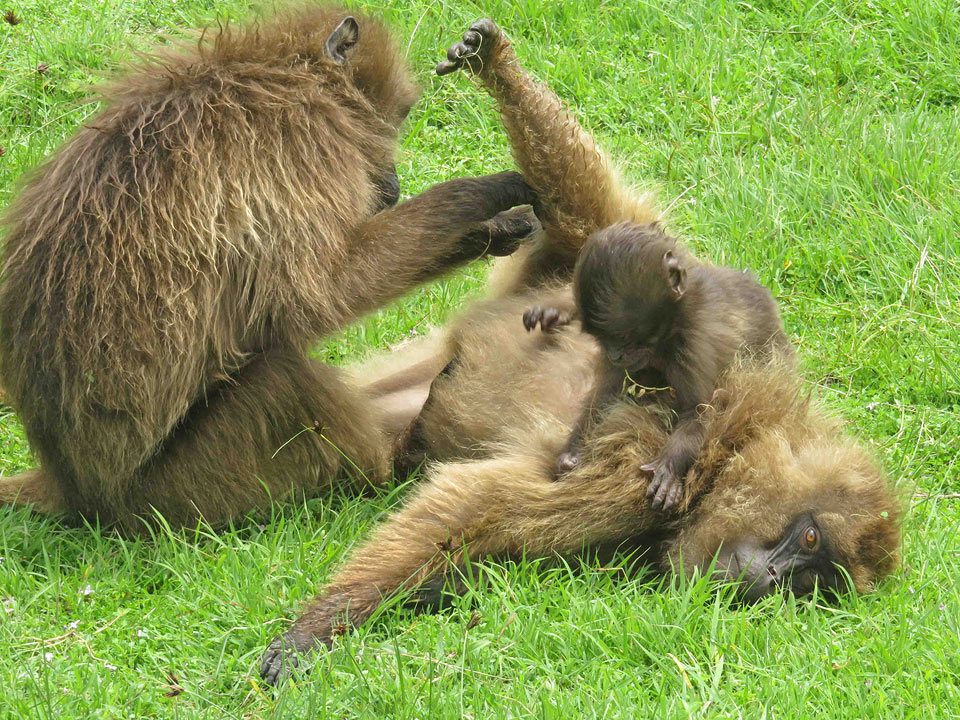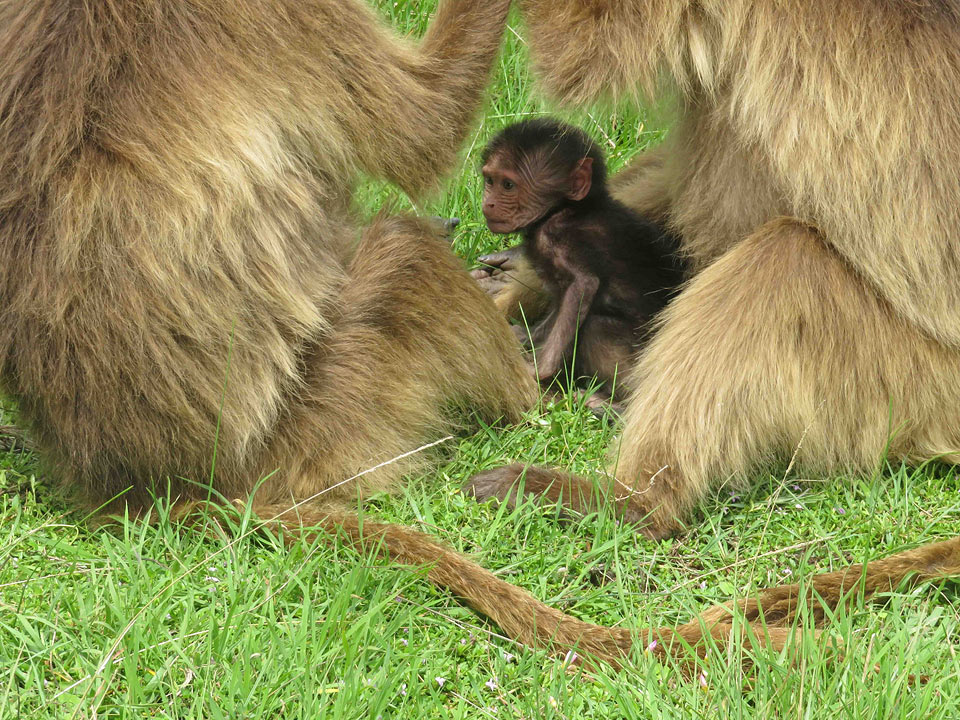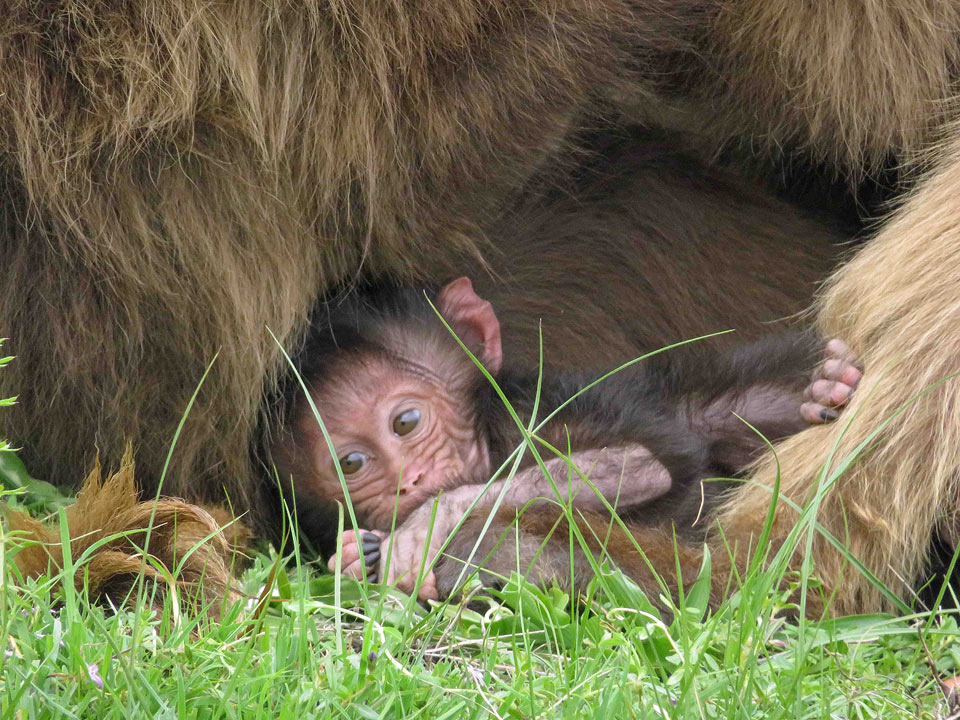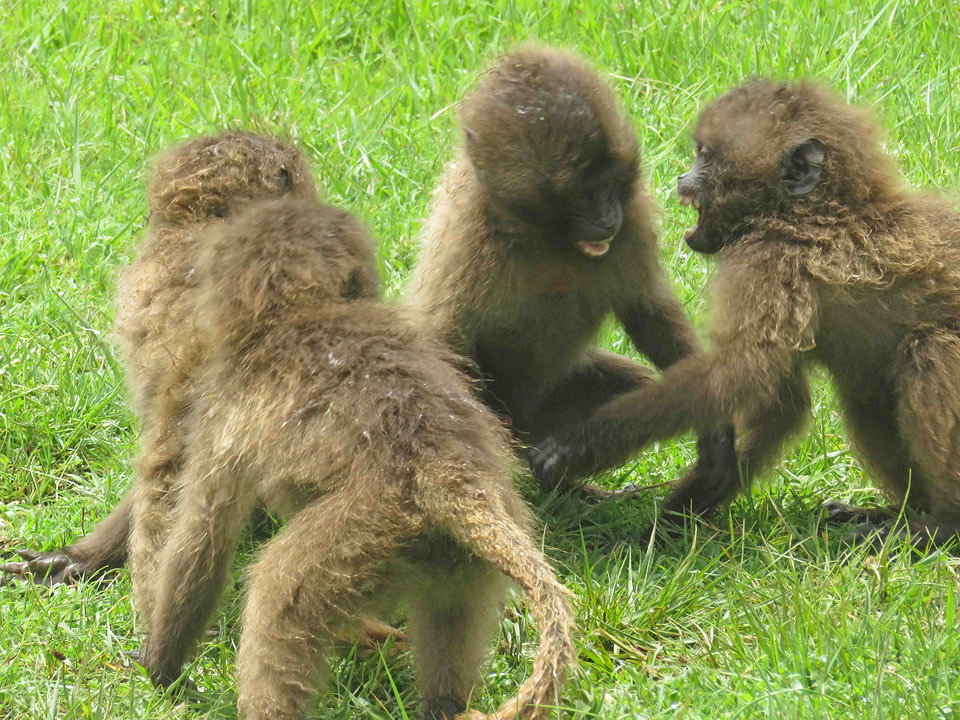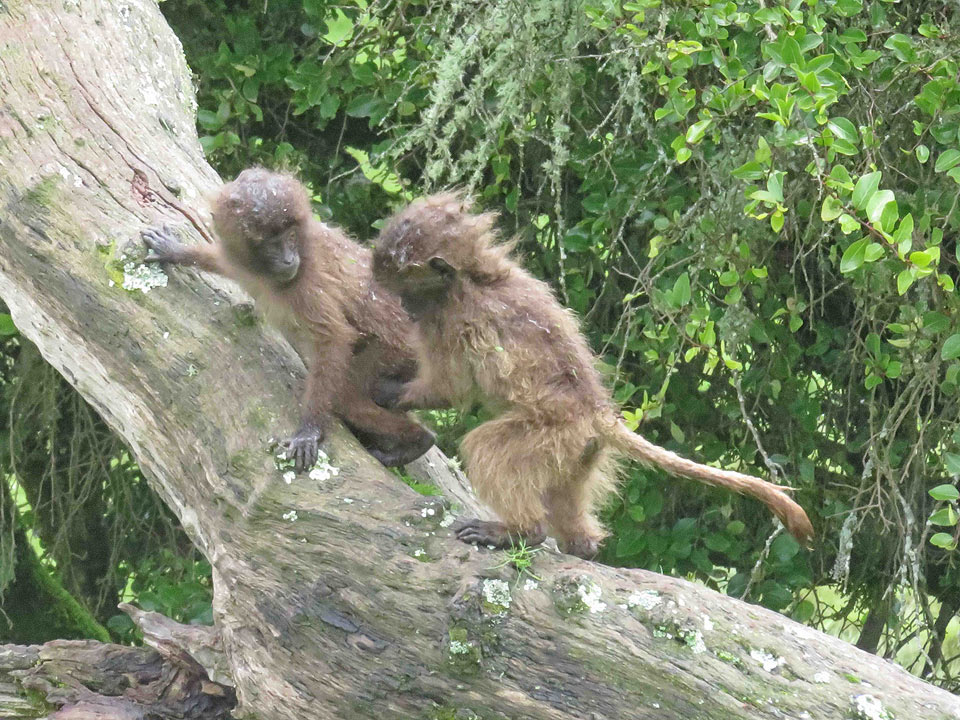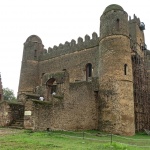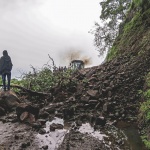A Day With The Mountain Baboons Of Ethiopia
AMAZING PHOTOS: With a passion for the plight of the world’s animals, Dr Anne Small of Moonee Ponds MindBody Health Centre has travelled to Africa and was thrilled to observe the antics of the Gelada baboons living in the green and grassy Ethiopian mountains.
She has snapped some spectacular photographs to show everyone back home, and taken her toy pet lion Leona to promote awareness of Melbourne-based organisation – For The Love Of Wildlife – (FLOW) which is on a mission to turn around the wildlife extinction crisis. FLOW has worked with the Australian government to be the first country to ban the importation of lion trophies and body parts, and is also calling on Australia and New Zealand to impose a full domestic trade ban in ivory and rhino horn.
Dr Anne’s blog: Today it was on to the Simien Mountains National Park. After 3 hours of driving through flat volcanic land, we arrived at a place that has high mountains and escarpments. These were created about 75 million years ago when an immense dome of basalt rock was forcibly uplifted by volcanic activity to create a sheer escarpment, which has slowly been eroded by rivers to make fascinating landscapes.
The highlight for Leona and I was our visit to the Gelada baboons.
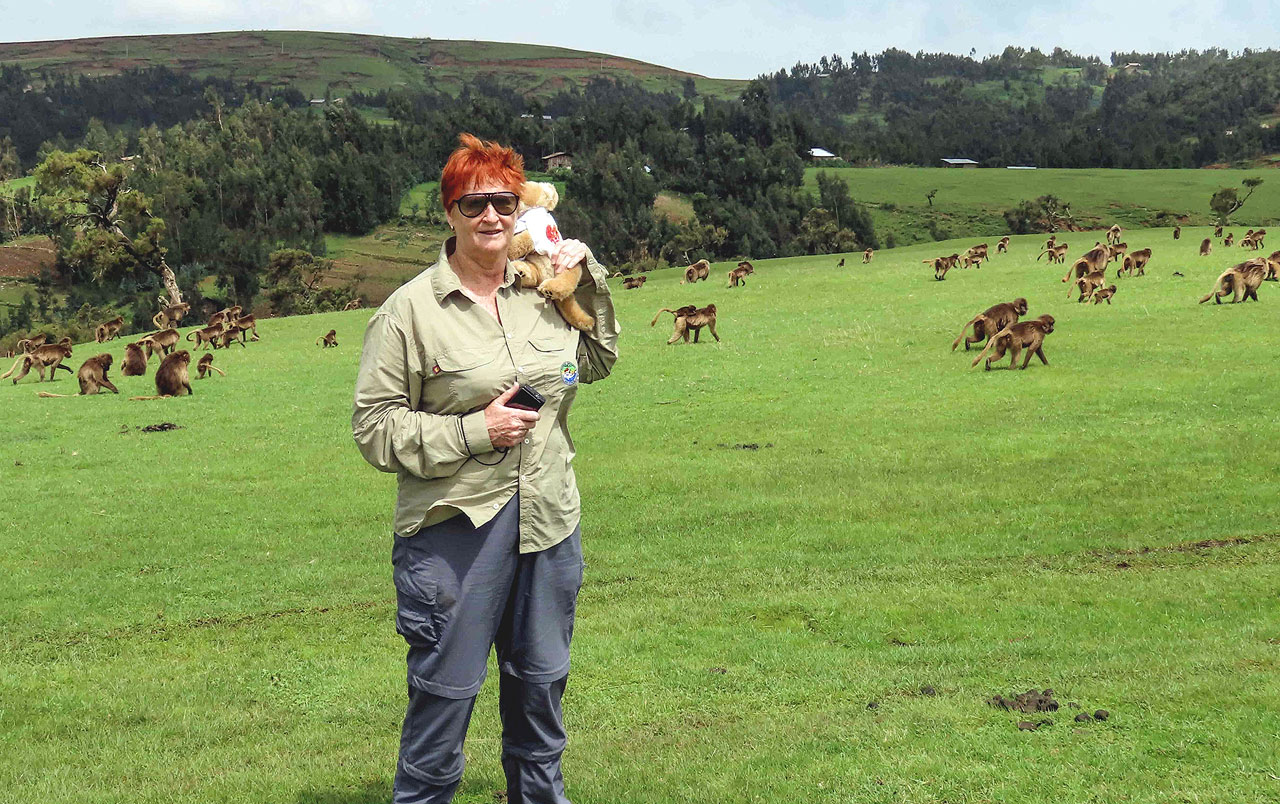
They are found only in Ethiopia. The males have a bright-red mark, like a heart, on their chest while the females have a similar red mark where their breasts are. It took me a while to figure this out. One female had obviously had many children because her breasts looked quite tattered, or perhaps it’s a virus infection.

When we first saw the troop of baboons which was about 300 strong, I saw the huge leader and he reminded me of a silver-back gorilla because he was so big.

We were then able to spend 4-5 hours with the baboons on 3 separate occasions separated by the early afternoon rain (it’s the rainy season) and by the farmers’ children, who scare the baboons off their pastures because they eat the grass that their sheep and cows eat.

On of the female’s started grooming a male’s face, then his neck, then his back and she found something tasty to eat and, of course, ended with his bottom.
This baby wanted to join in his mother’s grooming but climbed up on her head and fell off!
This baby was so small that he would have fitted into my hand. He couldn’t keep up with his mother, so she came back, grabbed him, picked him up and attached him to her chest as she walked off.
This hungry baby tried for many minutes to attach to his mother’s breast – it was a battle!
More random pictures of the many baboons including juveniles playing at being fierce adults
Seeing these stunning animals in their natural habitat has strengthened Dr Anne’s resolve to drum up support for the work of For The Love Of Wildlife. So she’s calling on her blog readers and wildlife lovers to donate to FLOW to assist with their trip to Geneva in August to attend the Convention on the International Trade in Endangered Species (CITES), which is the UN Convention that regulates the international trade in endangered wild flora and fauna.
CLICK HERE TO DONATE
All donations over $2 are tax deductible and are possible via PayPal, credit card or direct debit.
For more information about For The Love Of Wildlife’s important work, visit the website here www.fortheloveofwildlife.org.au











